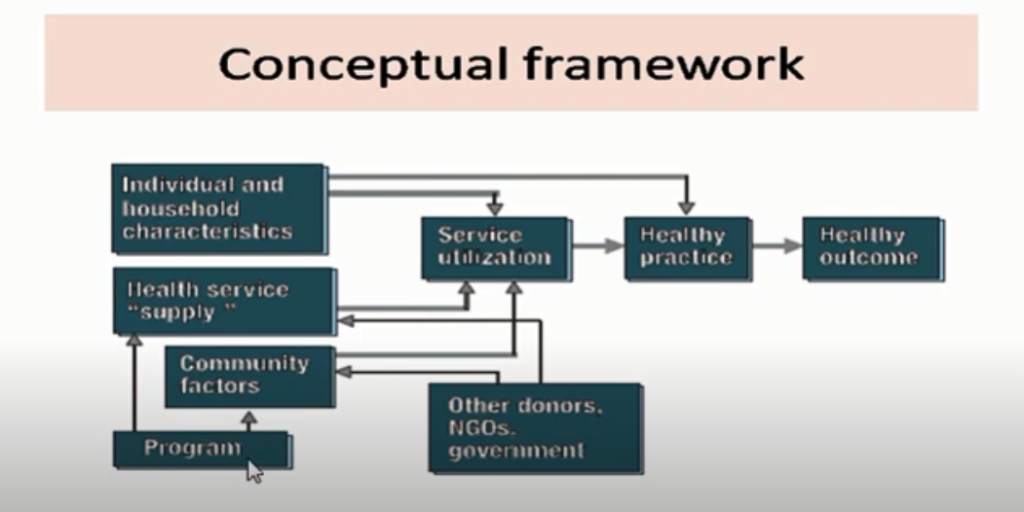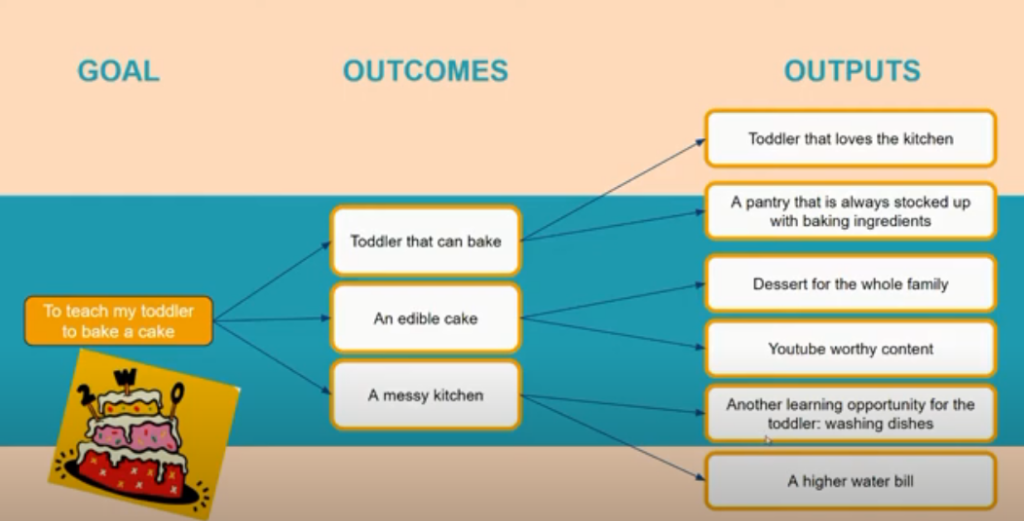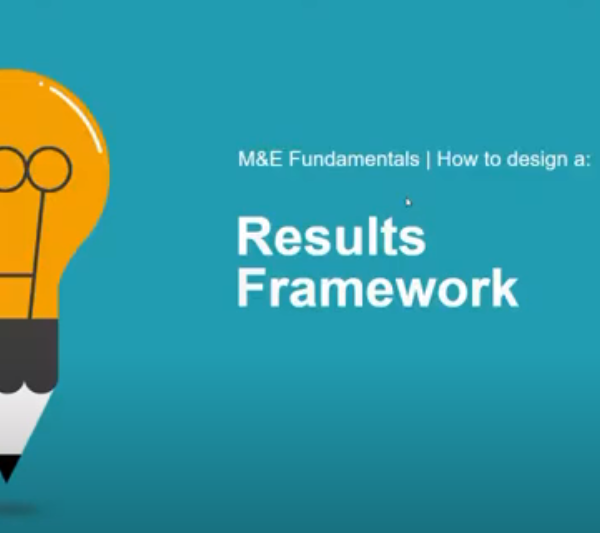In the realm of project management, the art of gauging project progress and outcomes holds the key to triumphant success. This is precisely where the realm of evaluation unfurls its vibrant canvas. As a finely woven tapestry of structured processes and meticulous analysis, evaluation bestows upon projects a profound sense of clarity and understanding. With each stroke of assessment, it illuminates the path forward, empowering decision-makers with invaluable insights that shape the project’s destiny. Like a compass guiding a ship through uncharted waters, evaluation navigates the project life cycle, charting the course towards excellence.
Defining an Evaluation Framework
An evaluation system in PM is a set of criteria, processes, and tools used to assess the effectiveness, efficiency, and impact of a campaign. It establishes parameters for measuring campaign progress, determining whether the project is achieving its goals, and identifying areas for improvement. The system includes a variety of assessment methods, including qualitative and quantitative data collection, analysis, and reporting.
The Purpose of an Evaluation Framework

The purpose of an evaluation system in project management is multifaceted and covers several key tasks:
- Project performance: The assessment system allows PMs to estimate the effectiveness of their projects. It helps determine whether the project is achieving its goals and objectives. By analyzing factors such as deliverables, milestones, and outcomes, project managers can determine project success and identify areas for improvement;
- Ensuring Effectiveness: Efficiency is the most important aspect of project management. An analysis system allows PMs to assess how effectively resources, including time, budget, and human resources, are being used. It helps identify any inefficiencies or bottlenecks in the project workflow and enables strategies to optimize resource allocation;
- Identify areas for improvement: Projects are dynamic and often require adjustments along the way. This system provides valuable information about areas that need improvement. It helps identify weaknesses, bottlenecks or gaps in project implementation. By identifying these areas, PMs can take corrective action, refine project plans, and improve overall project performance;
- Decision Support: This system serves as an important decision-making tool. It provides PMs with reliable and fact-based information to make informed decisions. By estimating project progress and results, PMs can make timely decisions about resource allocation, risk management, and project adjustments;
- Demonstrating Accountability: An estimation system promotes accountability among stakeholders. It allows managers to demonstrate their commitment to campaign success by estimating and reporting on progress. It provides a transparent and objective assessment of campaign performance, which builds trust and confidence among stakeholders;
- Supports learning and knowledge management: The evaluation system supports organizational learning and knowledge management. By capturing lessons learned and best practices, managers can apply valuable knowledge to future projects. This fosters a culture of continuous improvement and enhances the organization’s ability to manage campaigns.
In general, the purpose of an estimation system in PM is to assess performance, ensure effectiveness, identify areas for improvement, facilitate decision-making, demonstrate accountability, and support learning and knowledge management. By implementing this system, managers can improve results, reduce risk, and increase the overall success of their campaigns.
Benefits of an Evaluation Framework

Implementing an estimation system provides a number of benefits for PM:
- Increased decision-making: An assessment system provides reliable and objective information for decision-making. It allows PMs to identify areas for improvement, allocate resources efficiently, and adjust project strategies accordingly;
- Continuous Improvement: By measuring campaign performance on a regular basis, an assessment system fosters a culture of continuous improvement. It helps teams learn from past experiences, identify best practices, and make informed adjustments to optimize future campaigns;
- Stakeholder Engagement: An assessment system facilitates stakeholder engagement by involving stakeholders in the appraisal process. It creates a platform for collaboration, encourages feedback, and ensures that stakeholder input informs decision-making;
- Accountability and Transparency: The system holds PMs accountable for campaign results. By providing a transparent assessment of progress and results, it increases accountability and builds trust among stakeholders.
The appraisal system increases the likelihood of success by allowing PMs to identify and resolve problems in a timely manner. It ensures that campaigns stay on track, meet goals, and deliver the desired results.
What makes a good evaluation framework?
A good system has a number of key characteristics that contribute to its effectiveness in evaluating and improving project performance. Here are some of the qualities that make a good evaluation system:
- Clear goals and scope: This system should have clearly defined goals that are consistent with the goals and objectives of the campaign. It should define the scope of the appraisal by specifying which aspects of the campaign will be assessed and the desired outcomes;
- Relevance and context: A good appraisal system takes into account the unique characteristics, context and needs of the campaign. It considers the specific requirements, stakeholders, and issues associated with the project to ensure that the appraisal is relevant and applicable;
- Well-defined criteria and indicators: The framework should include clearly defined assessment criteria and indicators that provide measurable benchmarks for analyzing performance. These criteria and indicators should be aligned with the campaign objectives and provide objective and consistent evaluation;
- Data collection methods and tools: A good assessment framework identifies appropriate data collection methods and tools for collecting relevant and reliable information. It specifies the data sources, data collection methods, and tools to be used to ensure that the evaluation collects valid and meaningful data;
- Rigorous analysis and interpretation: The framework should define the methods of analysis and the approaches that will be used to interpret the data collected. It should specify how the data will be analyzed, summarized, and interpreted to draw meaningful conclusions and conclusions about campaign performance;
- Timeliness and practicability of results: A good system emphasizes the importance of timely presentation of results. It ensures that assessment results are communicated in a clear and actionable manner, providing PMs and stakeholders with the information they need to make informed decisions and take appropriate action;
- Stakeholder engagement: The system should involve stakeholders throughout the process. It should involve relevant stakeholders in the design, implementation and interpretation of the assessment, ensuring that their views are taken into account and fostering ownership of the evaluation results;
- Continuous improvement: A good system fosters a culture of continuous improvement by promoting learning and knowledge transfer. It should capture lessons learned, best practices, and recommendations for improving future projects, fostering continuous learning and organizational development;
- Flexibility and adaptability: The system should provide flexibility and adaptability to accommodate changes and contingencies in the assessment process. It should allow for adjustments to evaluation approaches, methods, and timelines as needed to ensure that the assessment remains relevant and effective;
- Ethical considerations: A good system supports ethical principles by protecting people, confidentiality of data, and adherence to ethical standards. The well-being and rights of the people and communities involved in the assessment should be a priority.
By incorporating these qualities, a good assessment system provides a strong foundation for meaningful, reliable and influential estimations that contribute to improvement and success.
What is the difference between evaluation framework and plan?
Here is a table showing the main differences between an estimation system and an plan:
| Aspect | Framework | Plan |
|---|---|---|
| Definition and Purpose | Sets the structure and approach for estimating the project’s progress and outcomes. | Outlines the specific activities, methods, and timeline to be followed. |
| Scope | Provides a broad framework for evaluation, including criteria, processes, and tools. | Focuses on the details of the estimation, specifying the specific data collection methods and analysis techniques. |
| Timing | Typically established early in the campaign lifecycle to guide evaluations throughout the project. | Created before or during the assessment phase to provide a roadmap for conducting evaluations. |
| Flexibility | Offers flexibility to adapt assessment methods and criteria as the campaign progresses. | Provides a more rigid and defined plan that may be difficult to modify once established. |
| Stakeholder Involvement | Considers stakeholder perspectives but may not explicitly outline their involvement. | Defines the roles and responsibilities of stakeholders in the assessment process. |
| Measuring Performance | Establishes the parameters for measuring the project’s progress and effectiveness. | Specifies the specific metrics, indicators, and targets for measuring performance. |
| Reporting and Communication | May provide general guidelines for reporting and communication of appraisal findings. | Outlines the reporting structure, format, and frequency for sharing results. |
These differences emphasize that the assessment framework defines the overall structure and approach to evaluation, while the appraisal plan focuses on the specific details and activities of the assessment process. The framework provides a flexible and high-level view, while the plan offers a more detailed and concrete roadmap for conducting assessments.
Both are important components of the process, working together to guide and inform decision-making throughout the campaign life cycle.
What Are the 4 Types of Project Evaluation?
| Type of Project | Description |
|---|---|
| Formative | Conducted during the project’s development and implementation stages. It focuses on providing feedback and identifying areas for improvement to enhance campaign effectiveness and efficiency. Formative assessment helps shape the project’s design and implementation strategies. |
| Summative | Conducted after the project’s completion to assess the overall impact and outcomes. It aims to determine the extent to which the campaign achieved its objectives and delivered the intended results. Summative assessment provides an overall assessment of the project’s success and informs future decision-making. |
| Process | Focuses on assessing the processes, procedures, and activities involved in campaign implementation. It examines how well the project was executed, identifies bottlenecks or challenges faced during implementation, and assesses the efficiency of PM practices. Process helps improve execution strategies. |
| Impact | Focuses on evaluating the long-term effects and impact of the campaign on its target audience or the broader environment. It assesses the project’s influence on desired outcomes, such as changes in behavior, policies, or social conditions. Impact assessment provides insights into the project’s effectiveness in achieving sustainable and meaningful changes. |
What Is a Project Monitoring and Evaluation Framework?
A project monitoring and assessment system is a structured and systematic approach that integrates project monitoring and activities into a coherent framework. It is a comprehensive set of guidelines, processes and tools for tracking project progress, analyzing results and making informed decisions throughout the project life cycle:
- Monitoring: Project monitoring involves tracking the implementation of activities, deliverables, and outcomes to ensure that the project is on track and meeting its goals;
- Assessment: Project assessment seeks to determine the overall effectiveness, efficiency, impact and sustainability of the campaign;
- A monitoring and appraisal system typically includes the following components:
- Campaign goals and indicators: Clear and measurable goals are established, as well as indicators that provide specific criteria for monitoring and evaluating progress;
- Data collection methods: The framework describes the methods and tools for collecting relevant data, such as surveys, interviews, observations, and document analysis. It outlines the frequency and timing of data collection;
- Data Analysis and Reporting:The data collected is analyzed to assess the effectiveness, outcomes and impact of the campaign;
- Roles and Responsibilities: The system defines the roles and responsibilities of those involved in monitoring and appraisal activities;
- Timing and frequency: The system defines the timing and frequency of monitoring and evaluation activities throughout the project life cycle.
Implementing a monitoring and appraisal system provides a number of benefits, including:
- Improved decision-making: The system provides reliable and up-to-date information for decision-making, allowing PMs to take timely action based on accurate data and insights;
- Increased accountability: By monitoring progress and analyzing results, the system promotes ownership by stakeholders, ensuring responsibilities are met and actions are taken to achieve campaign goals;
- Continuous learning and improvement: The system promotes learning by capturing experiences, identifying best practices, and incorporating feedback for future projects. This fosters a culture of continuous improvement;
- Stakeholder engagement: The system encourages stakeholder involvement in monitoring and evaluation activities by fostering collaboration and ensuring that different perspectives are considered.
By systematically monitoring project activities and results, the system increases the chances of campaign success. It helps identify and solve problems in a timely manner, leading to improved results.
What Is Evaluation in Project Management?
Evaluation in project management is the systematic process of analyzing the progress, results, and effectiveness of a campaign. It involves collecting and analyzing data and information to determine whether the project is meeting its objectives, producing the intended results, and achieving the desired impact.
Key aspects of appraisal in PM include:
- Progress Appraisal: This involves tracking and measuring campaign progress against planned activities, milestones, and timelines. This provides a clear understanding of how well the project is meeting its plans and helps identify any deviations or problems that need attention;
- Measuring Results: It focuses on analyzing results and outcomes. It examines whether the campaign achieved the desired results, delivered the planned products or services, and met the needs of stakeholders;
- Evaluating effectiveness: The appraisal examines the effectiveness of the project’s strategies, approaches and methodologies;
- Identifying Lessons Learned: Evaluation provides an opportunity to capture and document lessons learned during the campaign life cycle;
- Stakeholder Engagement: Estimation involves engaging stakeholders to gather their views, feedback, and opinions;
- Informing Decision Making: Evaluation plays an important role in decision making by providing fact-based information. It helps PMs and stakeholders make informed choices about campaign adjustments, resource allocation, risk management, and future planning. Estimation results influence strategic decision-making and contribute to campaign success.
Through estimation, PMs gain valuable insights into campaign performance, identify areas for improvement, and make data-driven decisions. Estimation is an iterative process that occurs throughout the project lifecycle, allowing project teams to adapt, learn, and optimize their efforts for greater project success.
Conclusions
In project management, an estimation system is a valuable tool for evaluating, measuring, and improving campaign performance. By establishing clear goals, estimation criteria, and data collection methods, PMs can make informed decisions that encourage.
